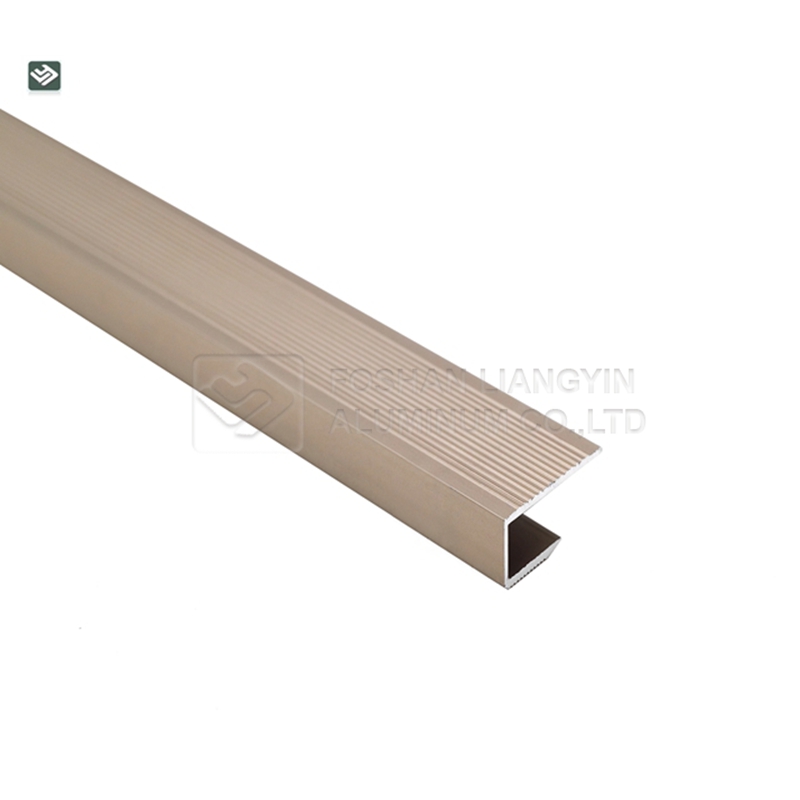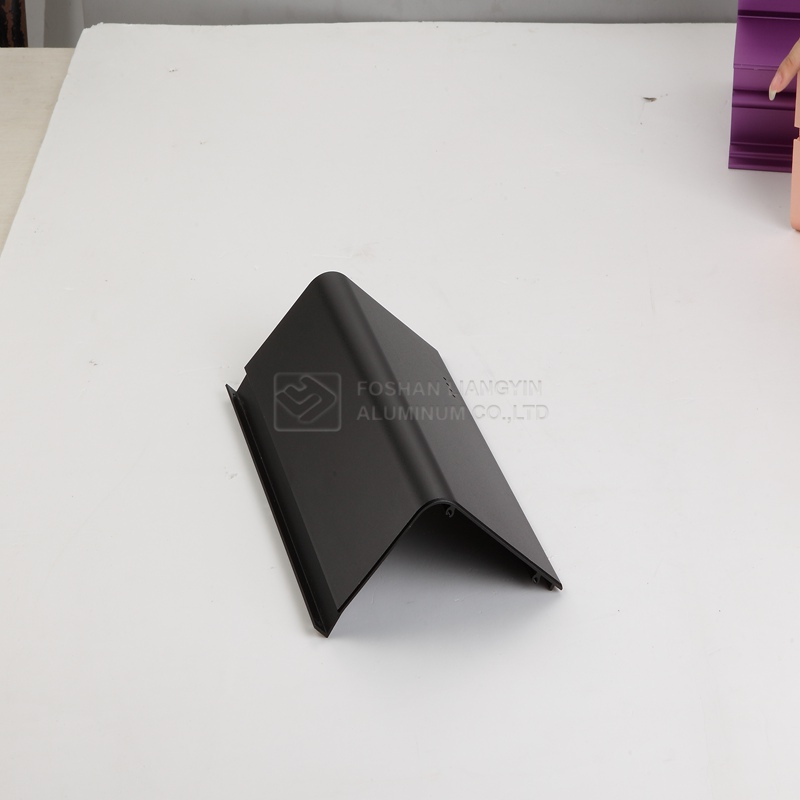6063 aluminum alloy profile is widely used for its good plasticity, moderate heat treatment strength, good welding performance and gorgeous color of the surface after anodic oxidation treatment and many other advantages. However, some defects often appear in the production process, resulting in low product quality, lower yield, higher production cost, and lower efficiency, which eventually leads to the decline of the enterprise's market competitiveness.
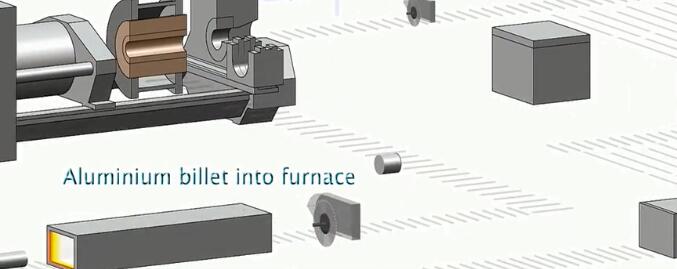
Figure 1
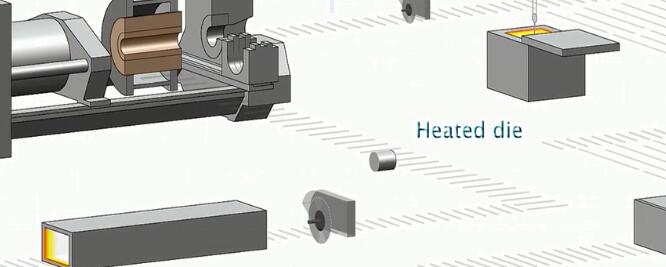
Figure 2
Therefore, solving the problem of defects of 6063 aluminum alloy extrusion profiles from the root is an important aspect for enterprises to improve their competitiveness. According to many years of aluminum extrusion production practice, the author hereby summarizes the common defects of 6063 aluminum alloy extrusion profiles and their solutions, and exchanges with many counterparts in order to promote each other.
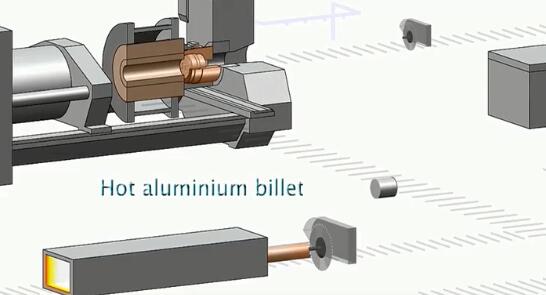
Figure 3
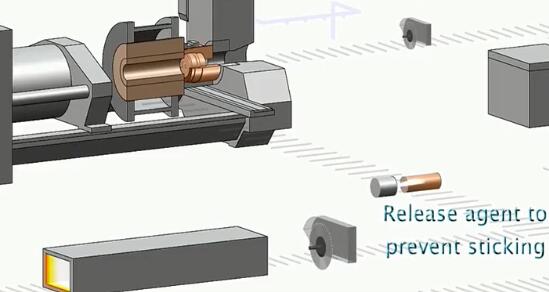
Figure 4
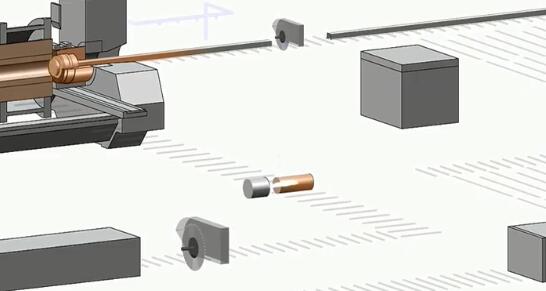
Figure 5
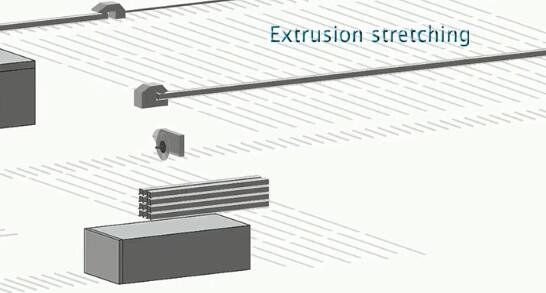
Figure 6
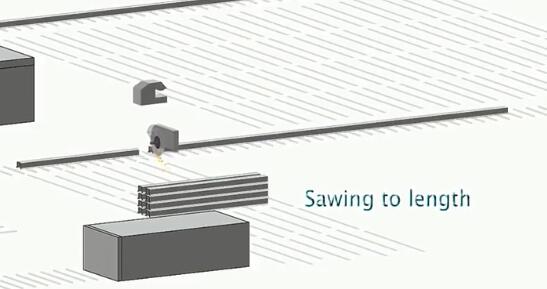
Figure 7
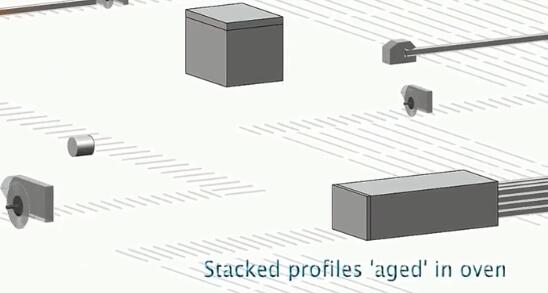
Figure 8
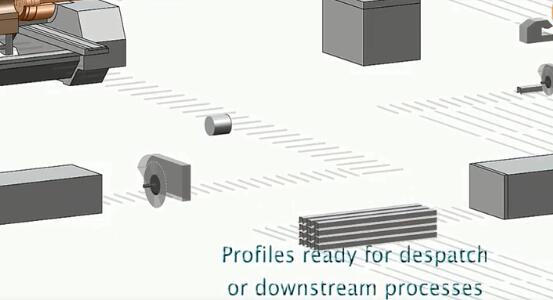
Figure 9
Scratches, scrapes, and bruises are the surface damage caused when the profile flows out from the die hole and comes into contact with tools and equipment in the subsequent process.
1.1 Main causes
(1) There is debris attached to the ingot surface or the ingot composition deviates. If there is a large amount of deviated floating material on the ingot surface and the ingot is not homogenized or the homogenization treatment is not effective, there is a certain amount of hard metal particles in the ingot, and when the metal flows through the working belt during the extrusion process, these deviated floating material or hard metal particles will adhere to the working belt surface or cause damage to the working belt, and finally cause scratches on the surface of the profile;
② There is debris on the mold cavity or working belt, and the hardness of the working belt of the mold is low so that the surface of the working belt is injured and scratched during the extrusion;
③There are hard inclusions in the exposed metal or graphite strip on the discharge track or swing bed, which cause scratches on the surface of the profile when it is in contact with the profile;
④When the profile is sent from the discharge track to the swinging bed by the fork material rod, the profile is bruised due to the excessive speed;
⑤ Artificially dragging the profile on the swing bed causes abrasion;
⑥Damage caused by mutual friction or extrusion between profiles in the transportation process.
1.2 Solutions
①Strengthen the control of ingot quality;
②Improve the quality of mold repair, regular nitriding of the mold, and strict implementation of the nitriding process;
③Insulate the profiles from the auxiliary tools with soft felt to minimize the contact damage between the profiles and the auxiliary tools;
④Take it lightly in the production and avoid dragging or turning the profile as much as possible;
⑤ Reasonable placement of profiles in the material frame to avoid mutual friction as much as possible.
2.1 Main causes
①The temperature of extrusion is too low, the extrusion speed is too slow, and the temperature of the profile at the exit of the extruder cannot reach the solid solution temperature, so the solid solution strengthening effect cannot be achieved;
②Few fans and insufficient air volume at the exit of the profile lead to slow cooling speed, which cannot make the profile drop below 20℃ in the shortest time, so that the coarse Mg2Si precipitates prematurely, thus reducing the solid solution phase and affecting the mechanical properties of the profile after heat treatment;
③The ingot composition is not qualified, and the Mg and Si content in the ingot cannot reach the standard requirements;
④The ingot is not homogenized, so the Mg2Si phase precipitated in the ingot is re-solidified within a short time of extrusion, resulting in insufficient solid solution and affecting the product properties;
⑤ Improper aging process, poor hot air circulation, or incorrect thermocouple installation position, resulting in inadequate aging or over-aging.
2.2 Solutions
①Reasonable control of extrusion temperature and extrusion speed, so that the exit temperature of the profile in the extruder is kept above the minimum solid solution temperature;
②Strengthen the air-cooling condition, the factory with conditions can install the atomized cooling device, in order to achieve the minimum requirement of 6063 alloy cooling gradient;
③Strengthen the quality control of ingots;
④Uniformity treatment for ingots;
⑤ Reasonable determination of aging process, correct installation of thermocouples, correct placement of profiles to ensure smooth hot air circulation.
3.1 Main causes
① Due to unreasonable design or manufacturing error of die, improper extrusion process, misalignment of die and extrusion barrel, unreasonable lubrication, etc., the flow rate at each point in the metal flow is too large, thus generating internal stress and deformation of the profile;
3.2 Solutions
①Reasonable design of the die to ensure the precision of the die;
② Correctly implement the extrusion process, reasonably set the extrusion temperature and extrusion speed;
③Ensure the alignment of the equipment;
④Adopt moderate traction force and strictly control the stretching and straightening amount of the profile.
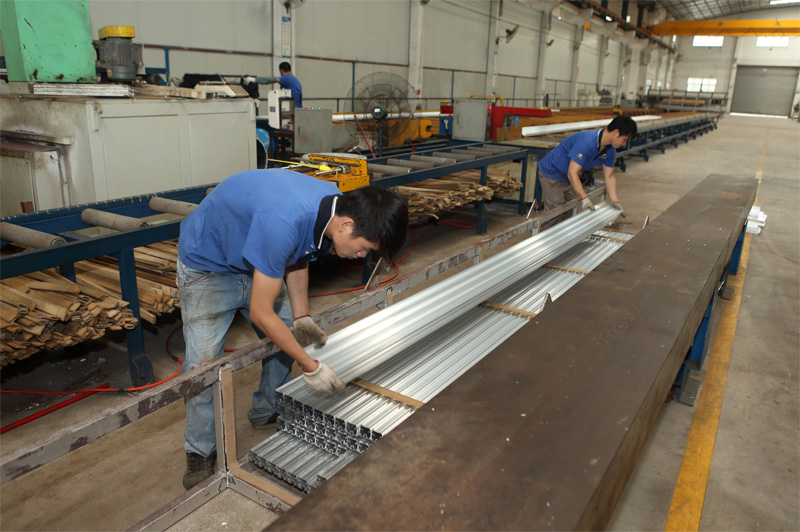
Extrusion ripples are similar to water ripples on the surface of extruded profiles, which generally have no hand feeling and are obvious under the action of light.
4.1 Main causes
① Periodic up and down jumping of the traction machine causes local bending on the surface of the profile;
②The mold design is unreasonable, and the working belt chatters under the action of extrusion pressure causing the ripples to appear on the profile.
4.2 Solutions
①Ensure the smooth operation of the traction machine;
②Reasonable design of die structure.
The pockmarked surface refers to the appearance of unequal density, trailing, and very fine tubercles on the surface of the profile, which feels obvious and has the feeling of spikes.
5.1 Main causes
Due to the inclusions in the ingot or the metal or debris stuck on the working belt of the die, they are dislodged by the high temperature and high-pressure aluminum entrapment during the extrusion, forming the pockmarked surface on the surface of the profile.
5.2 Solution
①Appropriately reduce the extrusion speed and adopt a reasonable extrusion temperature and die temperature;
②Strictly control the quality of ingots, reduce the content of inclusions in the ingots, and homogenize the ingots;
③Strengthen the quality management of die repair.
After the anodic oxidation of the profile, the black and gray spots appear locally, which are distributed at equal distances on the surface of the longitudinal bed of the profile and vary in size.
6.1 Main causes
Due to insufficient air-cooling at the exit of the extruder, the aluminum material touches the pendulum bed at a higher temperature, and the cooling speed of the contact area is different from that of other locations, and coarse Mg2Si phase is precipitated, which turns into black and gray after anodic treatment.
6.2 Solutions
①Strengthen the strength of air-cooling, avoid the interval of profiles on the pendulum bed is too small, and ensure the temperature gradient of air-cooling;
②The factory with conditions should adopt the method of combining atomized water cooling and air cooling, which can completely eliminate the black spot.
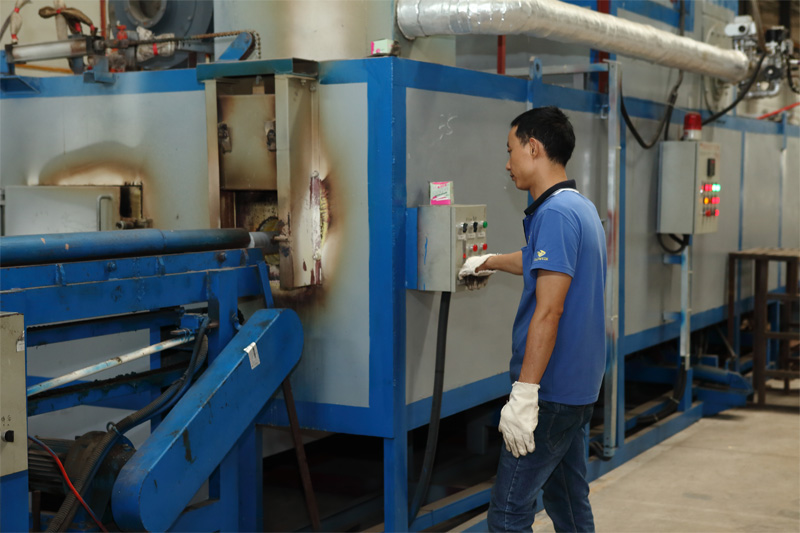
There are more kinds of streak defects in extrusion profiles and the form factors are more complicated, so only the causes and solutions of some common streaks are discussed here.
7.1 Friction pattern
After each extrusion of the die, the lines cannot correspond to each other, and there are light and heavy lines.
7.1.1 Main reasons
In the extrusion process, the profile flows out of the die hole at the moment and the work belt is close together, constituting a pair of dry friction under the hot state, and the work belt is divided into two zones - the adhesion zone and the sliding zone. In the adhesion zone, the metal mass is subjected to forces from at least two sources: friction and shear. When the friction force on the metal mass in the adhesion zone is greater than the shear force, the metal mass will adhere to the surface of the working strip in the adhesion zone and rub the surface of the profile to form a friction pattern.
7.1.2 Solutions
①Adjust the exit angle A of the working belt of the mold so that it is within the range of -1°~-3°, which can reduce the height of the sticking area of the working belt, reduce the friction force of the area and increase the sliding area;
② Carry out efficient die nitriding treatment to keep the die surface hardness above H900; sulfur infiltration on the work belt surface can reduce the friction force in the adhesion zone and reduce the friction pattern.
7.2 Tissue streaks
7.2.1 Main causes
Uneven casting organization of ingots, partial analysis of composition, more serious defects under the skin of ingots, insufficient uniformity ratio treatment of ingots, etc., lead to the uneven surface composition of profiles in the subsequent extrusion process, thus causing different coloring ability of profiles after oxidation and forming tissue streaks.
7.2.2 Solutions
①Rational design of die structure;
②The die processing should pay attention to the transition of the working belt to prevent the working belt from falling;
③Ensure the mold bridge is teardrop type and eliminate the angles.
7.3 Weld streaks
Weld streaks, also known as weld seams, are straight and long, mostly light gray in oxidized white material and light color in colored material.
7.3.1 Main causes
① mold shunt hole design is too small;
②Welding room concentration is not enough to ensure that there is sufficient pressure;
③Insufficient supply of aluminum in the welding chamber of the die during extrusion;
④Improper extrusion process and improper lubrication.
7.3.2 Solutions
① Reasonable design of the die structure;
② pay attention to the extrusion temperature and extrusion speed coordination;
③Minimize lubrication or no lubrication.
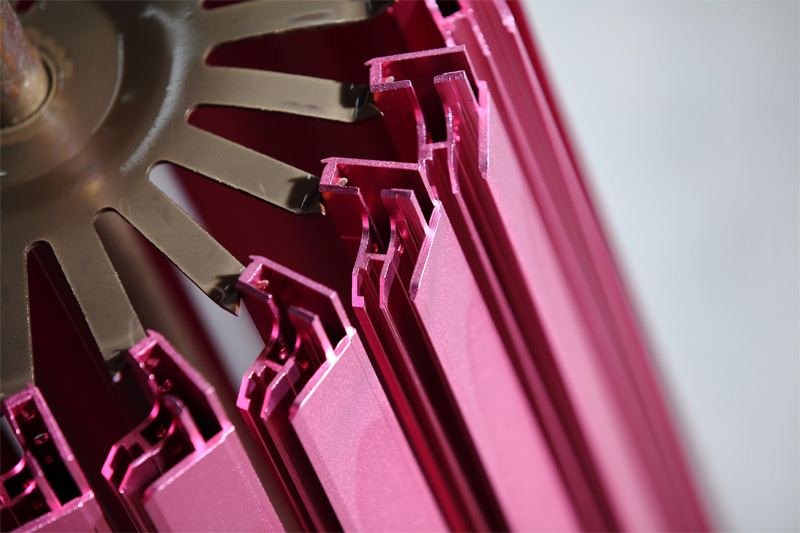
The profile is subjected to tensile stress during extrusion and the metal transverse tearing phenomenon is formed on the surface in different degrees.
8.1 Main causes
①The metal surface layer is subjected to additional tensile stress due to friction, and cracks will occur when the additional tensile stress is greater than the tensile strength of the metal surface layer;
② extrusion temperature is excessive, the metal surface tensile strength decreases, the role of friction cracking;
③ When the extrusion speed is too fast, the additional tensile stress on the surface layer of the metal increases, causing cracks in the profile.
8.2 Solutions
Strictly control the extrusion process parameters to ensure a reasonable exit speed and exit temperature.
Waving, twisting and bending are the defects of profile shape caused by uneven metal flow.
9.1 Main causes
① Uneven metal flow due to unreasonable design of die working belt;
②The extrusion speed is too fast or the extrusion temperature is too high, resulting in uneven metal flow;
③Uneven metal flow caused by unreasonable layout of die hole;
④Inappropriate guide path or no guided path installed;
⑤Inappropriate lubrication.
9.2 Solutions
①Trim the working belt of the die to make the metal flow evenly;
② Adopt a reasonable extrusion process, and try to use low-temperature extrusion under the premise of ensuring the exit temperature;
③Reasonable design of the die structure;
④Configure a suitable guide path;
⑤ reasonable lubrication;
⑥Traction extrusion using traction machine.
The separation between the surface metal of the profile and the base metal appears locally continuous or intermittent, manifested as round or locally continuous bulge.
10.1 Main causes
① Due to long-term use of the extrusion barrel size exceeding the poor, extrusion barrel gas is not excluded, deformation of the surface layer of metal along with the front elastic area outflow and cause bubbles;
② ingot surface grooves or ingot organization in the pore, ingot in the pier coarse wrapped into the gas, extrusion gas into the metal surface layer;
③ extrusion, ingot or mold with water and oil, due to water and oil heat volatilization into gas, in the high temperature and high pressure of the metal flow was caught in the surface of the profile to form gas;
④The equipment exhaust device is not working properly;
⑤ Metal filling is too fast, resulting in poor extrusion and exhaust.
10.2 Solutions
①Rational selection and equipping of extrusion tools, timely inspection, and replacement;
②Strengthen the quality management of ingots, and strictly control the surface quality and gas content of ingots;
③Ensure that the exhaust system of the equipment works normally;
④Scissors, extrusion barrels, and dies should be less oiled or not oiled;
⑤ Reasonable control of extrusion speed and exhaust as required.
